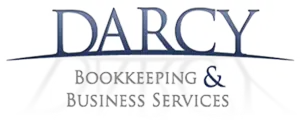


Small business owners face a variety of challenges when it comes to managing their finances, and debt management is one of the toughest.
Customer debt can quickly spiral out of control if not managed effectively, which is why it’s important to follow effective debt management guidelines so that you can stay in control of your finances.
It is essential that terms of trade are established and understood by your customers prior to supply. It should be signed and dated by the customer to show their acknowledgment and agreement to those terms.
It is also essential to monitor any extensions of credit to customers, and to remain firm in not extending credit beyond reasonable limits based on the customer’s assessment. If outstanding debt arises, it is important to have an established approach in managing the overdue payments.
If you provide the right information on your documents, and invoice promptly, you are more likely to be paid on time. All quotes, estimates, invoices, contracts, agreements, purchase orders, and related documents should refer to your terms of trade and credit policy.
The secret to good debtor management is well-maintained information. There are many software solutions available to help you with your creditmanagement, and increasingly more of them are cloud-based. Good software solutions can relieve you of much of the administrative and management pain associated with debtor management.
Create invoices to bill to clients at the right time. Ask your clients what day is the most convenient for them in terms of cash flow. Some customers might get billed bimonthly, some weekly. It will depend on your business agreement.
Agree on a date and send all invoices electronically to keep better documentation. This strategy will streamline your accounts receivable process flow.
Concentration risk is a serious issue for any business, and it can come from anywhere. It could be the result of an acquisition or merger, or it might just happen naturally as your customers grow in size and volume. Whatever the cause, if you don’t take steps to mitigate this risk now, it will only get worse over time.
External, uncontrollable circumstances can cause people not to repay their loans or credits. In such cases, businesses need to be prepared for the financial impact it could have on their bad debt expenses.
Bad debt provision is important in times of crisis because it provides a financial buffer and protects businesses from being impacted too heavily by customers’ hardships. By making conservative provisions—estimating that a higher amount of doubtful debts will need to be written off in the future than have historically—you can prepare your business for the possibility of a crisis that causes more customers than usual not to repay their loans.
Good receivables management will directly contribute to your businesses’ profit due to its ability to reduce bad debt. The benefits include a better cash flow and higher availability of liquidity for your business’s investments and acquisitions. Moreover, proper accounts receivable management will boost your company’s image in the market. The three main elements of managing accounts receivables are – invoicing, monitoring, and collections. Any business should ensure that these steps are checked while carrying out its business and other functions to provide a stable future.
